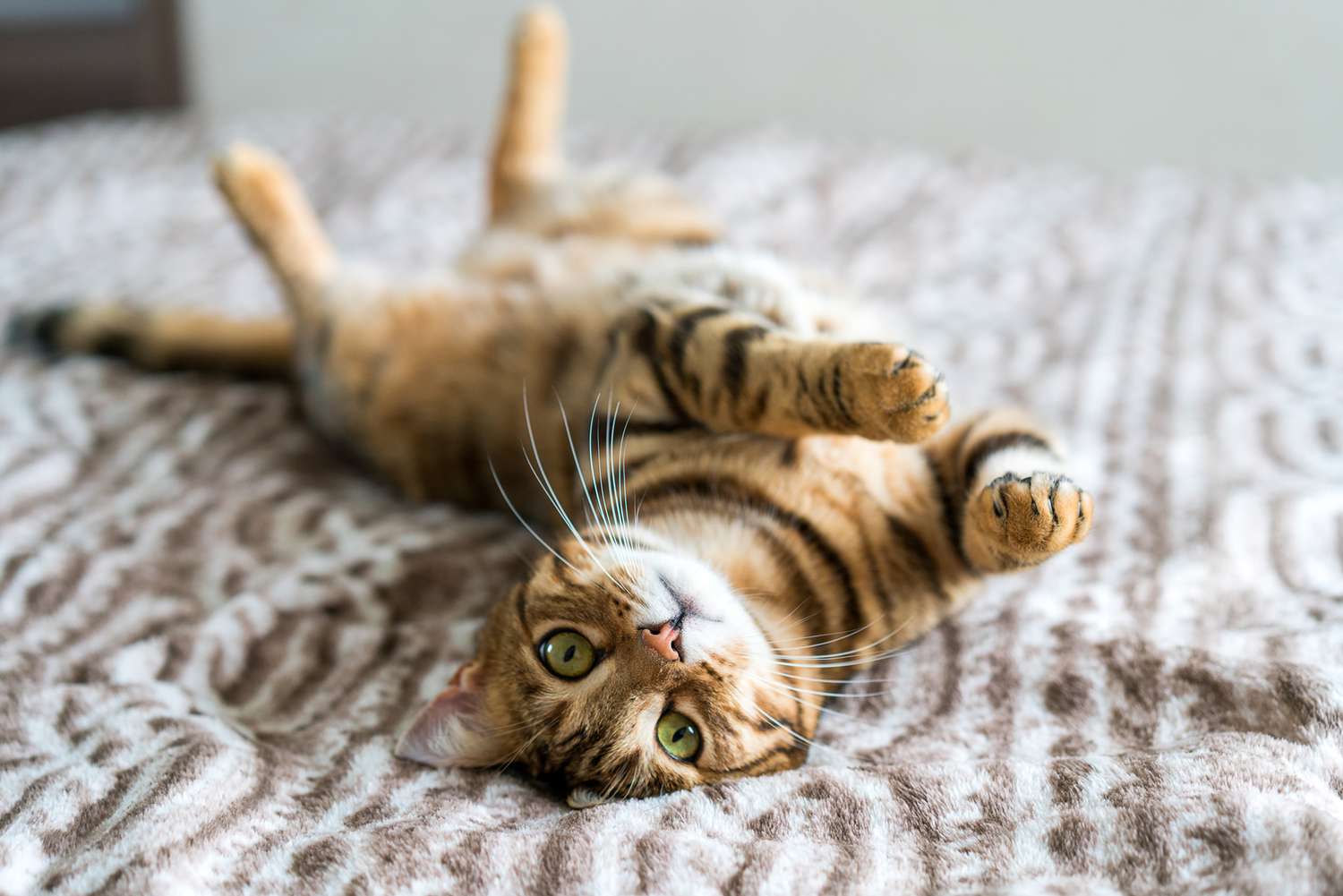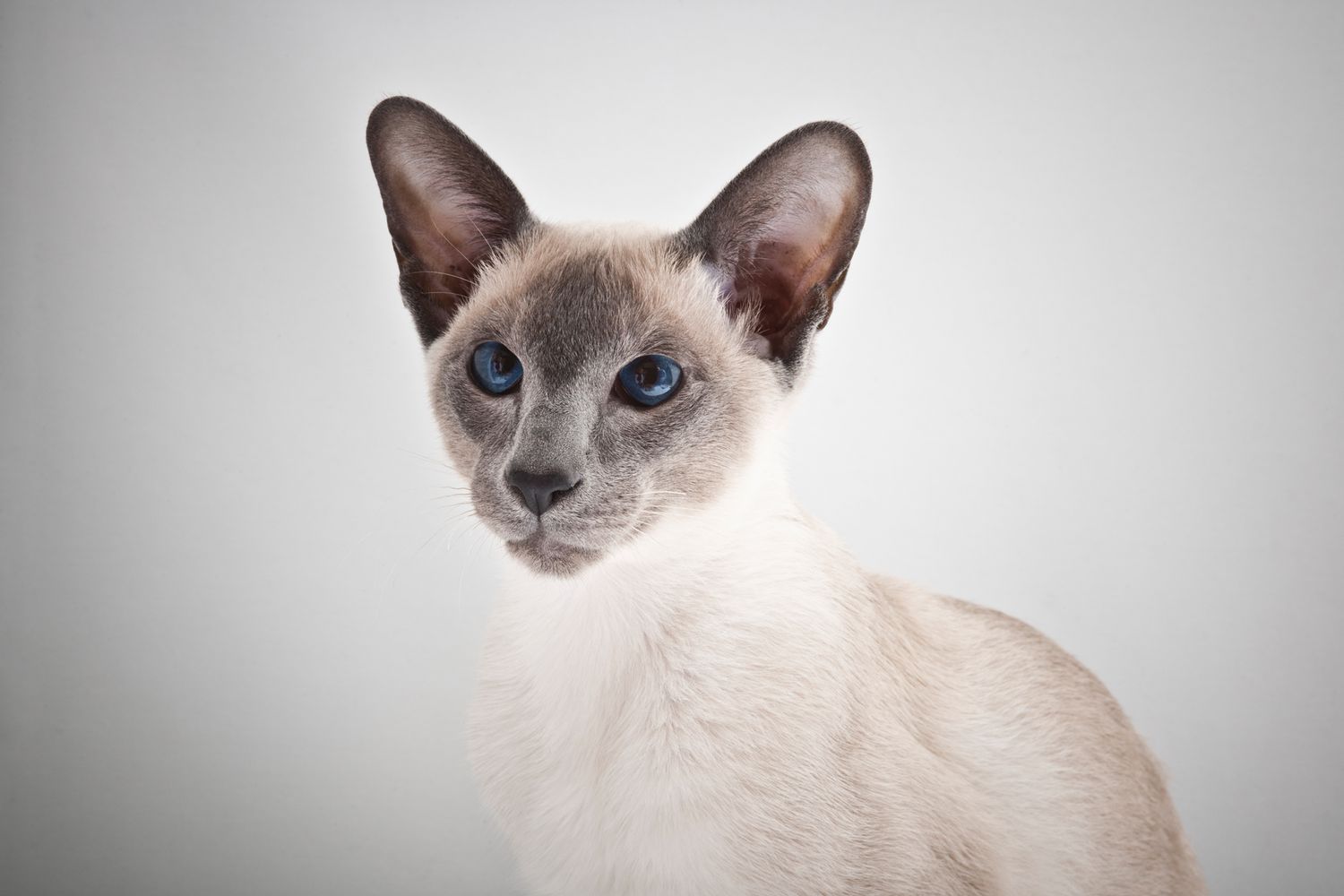 Credit: Casarsa Guru / Getty Images
Credit: Casarsa Guru / Getty Images
Some are furless but all are full of character. These felines are considered hypoallergenic, including the Balinese, Siberian, Devon and Cornish Rex, and Bengals.
Start Slideshow  Credit: Casarsa Guru / Getty Images
Credit: Casarsa Guru / Getty Images
Let’s face it, a cat allergy is not pretty. Sneezing, hives, itchy eyes, and even severe asthma attacks can happen when a furry friend is underfoot. To make matters worse, cat allergies are fairly prevalent: As it turns out, people are twice as likely to be allergic to cats than dogs. Does this mean that you can’t bring home a purring cat if you’ve experienced allergic reactions in the past? Simply put, it depends. Common belief is that the amount of hair or fur on an animal is what causes allergies. However, cat geneticist Leslie Lyons, who runs the University of Missouri’s Feline and Comparative Genetics Laboratory, says this isn’t true. “You’re not allergic to the hair; you’re allergic to proteins that are in their saliva.” And when people talk about a cat’s dander, what they mean (or should be meaning) are these proteins.
Here’s the science: Fel d 1 protein is found in the cat’s skin, saliva, and urine. When a cat cleans itself by licking its fur, the Fel d 1-laden saliva dries and turns into an airborne allergen. This is added to the fact that the owner has it on their hands after petting the cat and can spread it to other surfaces; plus, cats inhabit almost every nook and cranny of a home, making the allergen widespread.
Still craving a cat companion and wondering if a hypoallergenic breed exists—you know, one producing fewer allergens? According to Lyons, all cats can cause allergies—even the hairless ones—and individual pets may vary. The best thing to do? Meet and greet with your feline friend first. And with all that being said, there are some breeds that experts say tend to produce fewer allergic reactions. While allergies will always vary from person to person, these are the top cat breeds known to be more allergy-friendly.
Siberian
 Credit: Jean Michel Segaud / EyeEm / Getty Images
Credit: Jean Michel Segaud / EyeEm / Getty Images
“If anything is closest to being hypoallergenic, it’s the Siberian,” reports Lyons. And even though the Siberian sports a relatively long and lush coat, it is still more hypoallergenic because it has lower levels of Fel d 1 protein in its saliva. Lyons says, “People have noticed that specific Siberian cats do not elicit as much of an allergy response as other cats.” Siberians are generally intelligent, affectionate, and playful.
Balinese
 Credit: Aleisha Knight / Getty Images
Credit: Aleisha Knight / Getty Images
Despite the look of its long, silky hair, this breed can produce less allergy-causing protein than other cats, plus it experiences minimal shedding. Balinese cats are sweet, smart, social, and are known for being chatty. In fact, Balinese are known to be aware of moods, so in addition to keeping your allergies down, they will likely keep your mood up, too.
Oriental Shorthair
 Credit: Cynoclub / Getty Images
Credit: Cynoclub / Getty Images
Despite being low on the allergenic side, the Oriental Shorthair is full of enthusiasm, curiosity, and likes to take center stage, so you’ll want to lavish this breed with love. The extroverted personality of this breed is as distinctive as their coat—these cats can be found in over 300 colors and patterns.
Devon Rex
 Credit: Insonnia / Getty Images
Credit: Insonnia / Getty Images
The Devon Rex has an elfish appearance to match its spunky personality. This short haired breed doesn’t shed a lot and you don’t have to bathe them as often as its cousin, the Cornish Rex, but it is recommended to regularly clean their paw pads and ears of oil build-up.
Cornish Rex
 Credit: Sicha69 / Getty Images
Credit: Sicha69 / Getty Images
Due to their energy and sleek look, the Cornish Rex is often referred as the greyhound of the cat world. This unusual looking breed is extremely playful, loving, and outgoing towards humans, and their warm, sued-like fur makes them irresistible to touch.
Sphynx
 Credit: Cavan Images / Getty Images
Credit: Cavan Images / Getty Images
The Sphynx is very often noted as being a hypoallergenic cat breed because they appear hairless when, in fact, they are actually covered with barely noticeable tiny down. And just because they seemingly lack hair doesn’t mean they’re maintenance-free. Sphynx cats needs frequent baths to eliminate a gummy, oily buildup on their skin and cleanings of their large ears. The Sphynx is an animated, lively breed that can keep you entertained with aerial feats.
Russian Blue
 Credit: Marcal Cuberta / Getty Images
Credit: Marcal Cuberta / Getty Images
Named for the color of its coat, the Russian Blue has a slightly upturned mouth giving it a Mona Lisa type smile. Being reserved and independent, this breed is a good choice for those working outside of the home.
Bengal
 Credit: Ingus Kruklitis / Getty Images
Credit: Ingus Kruklitis / Getty Images
Some believe this breed produces less allergens because of its short coat or that it sheds less, while some think it has to do with their wild ancestry. While concrete data on this is nonexistent, there’s no doubt that the Bengal is child-like with high-energy and enjoys playing games.
Colorpoint Shorthair
 Credit: Carl Salonen / Getty Images
Credit: Carl Salonen / Getty Images
Like its cousin the Siamese, the Colorpoint Shorthair breed requires little grooming, easily makes friends, chats a lot, and freely shows its affectionate side. Plus, it doesn’t shed much or produce much allergy-inducing dander.
Javanese
 Credit: Richard Bailey / Getty Images
Credit: Richard Bailey / Getty Images
Like the Balinese, the Javanese has a somewhat-long single coat that will not mat. Because of the lack of undercoat, they have less fur, which can possible translate into fewer allergens. Javanese cats are known to be very smart and responsive—seeming to understand when spoken to—making them a good breed to train.








